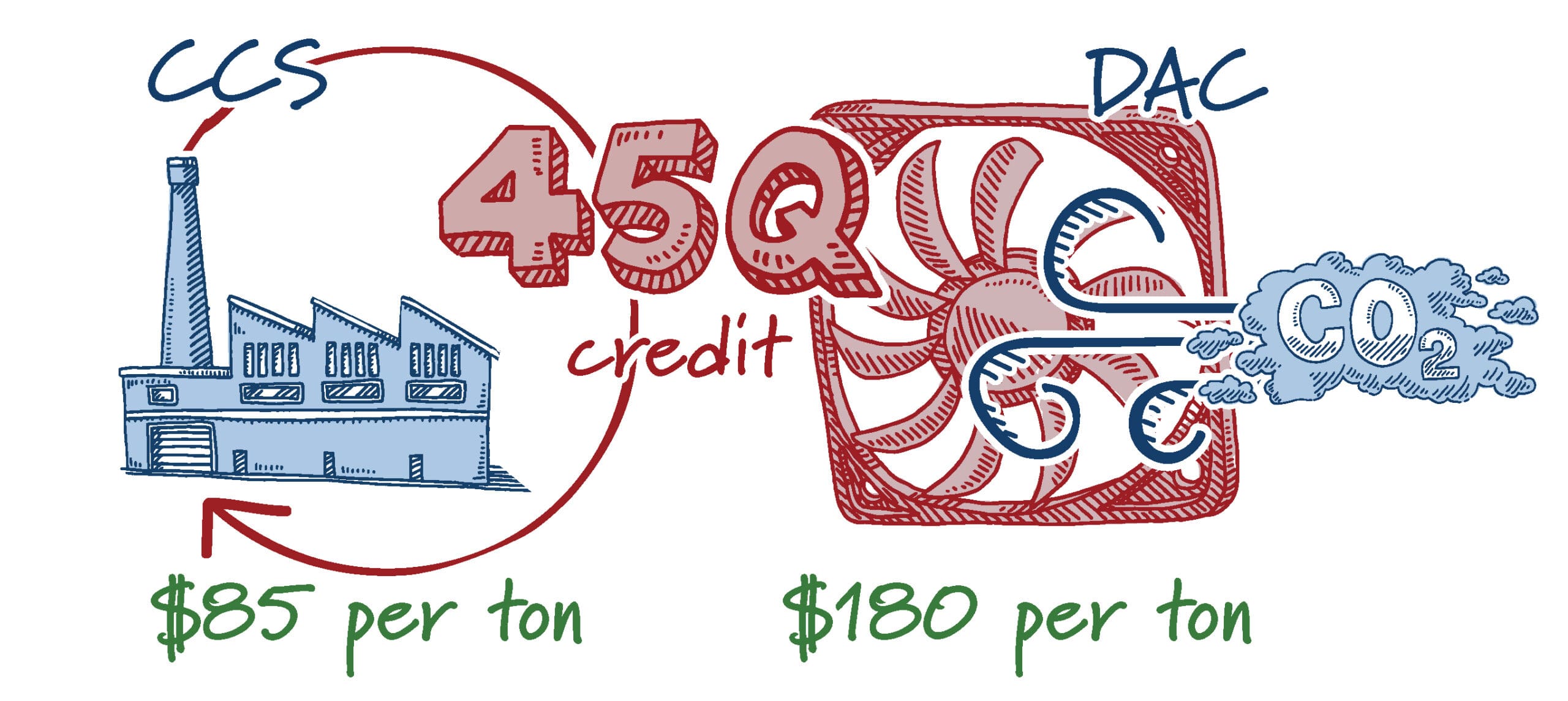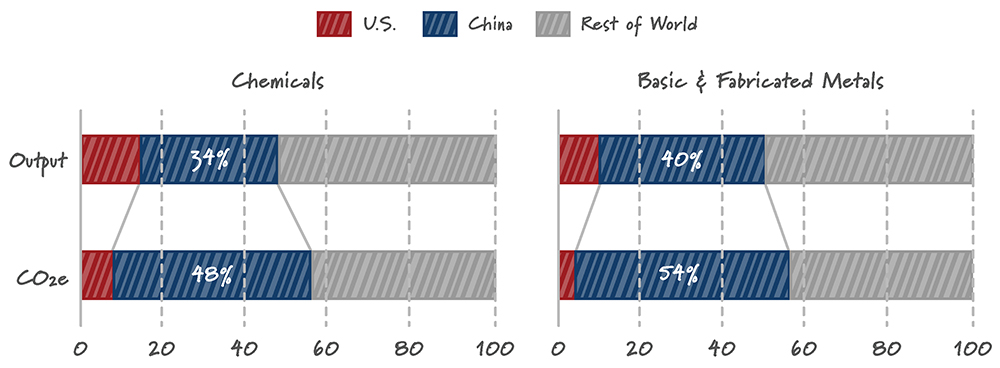Posted on July 17, 2025 by Savita Bowman and Rafae Ghani
America’s success is historically rooted in its ability to innovate. American innovation doesn’t just change our country — it reshapes the world. From the steam engine to the internet, inventions from the United States have shaped modern civilization. This is no different in the energy sector, where the shale revolution supercharged economic growth, transforming America from an energy-dependent nation to the world’s leading producer of oil and natural gas. This shift drove down consumer costs, strengthened national security and positioned the U.S. as a global energy powerhouse.
Today, that same spirit of innovation is shaping the next era of energy leadership. American entrepreneurs and engineers are developing breakthroughs in advanced manufacturing and carbon innovation that will define the future of affordable, reliable and clean energy and products.
To lead the global market in clean materials, like steel and concrete, and carbon management technologies, America needs a strategy that builds industries here and sell abroad. That means leveraging our research and development (R&D) investments with smart, strategic bets in demonstration and commercialization work that is key to ensuring the future of industry is made in America.
We’ve seen before what happens when America gets innovation right. In the 1960s, the U.S. government set an ambitious goal through NASA’s Project Apollo: to land Americans on the moon and return them safely to Earth. To accomplish this, the government partnered with MIT to develop the Apollo Guidance Computer, a feat requiring then-untested integrated circuits, also known as microchips.
Through smart public-private collaboration, federal procurement of these chips scaled production, improved quality, and rapidly drove down costs. NASA was the primary buyer, initially paying $1,000 per chip in 1962. Just a year later, costs fell to $15, and by 1969, a vastly superior chip cost just $1.58. This deliberate, early support catalyzed a semiconductor industry that today is valued at $627 billion and underpins everything from smartphones to national defense systems.
But there’s also a cautionary tale: the solar industry. Solar photovoltaic technology was invented in the U.S. to support the space race and diversify energy sources, but was not supported by public-private collaboration, such as manufacturing incentives or early market creation. America led on solar R&D but missed its chance to capture returns by failing to pair innovation with long-term incentives and market demand. As a result, over the past two decades, China aggressively captured the solar manufacturing base and supply chain, investing heavily in raw materials processing and production. Today, China controls over 80% of the global solar panel and battery storage manufacturing and supply chain.
Today, America has the opportunity to lead globally in carbon management and industrial manufacturing, technologies key to the production of steel, concrete and clean energy. Breakthroughs in carbon management and industrial manufacturing technologies require smart public-private partnerships, and with clear, stable policy signals to get off the ground. For example, the recent passage of the One Big Beautiful Bill Act reaffirmed support for carbon capture by preserving, and in some cases strengthening, the federal 45Q tax credit. This cornerstone policy provides certainty and incentives for American companies to invest, build and lead in next-generation carbon management solutions.

The new law maintains the 45Q credit for point-source capture at $85 per ton and direct air capture (DAC) at $180 per ton for dedicated geologic storage. Critically, it also provides parity for CO₂ sequestered through enhanced oil recovery or utilization with the credit value for dedicated geologic storage, raising the rate from $60 to $85 per ton for point sources and from $130 to $180 per ton for DAC. This change unlocks new market pathways for carbon-to-value technologies that are being explored by sectors such as oil and gas, aviation and agriculture. It preserves transferability, updated inflation adjustments and introduces new restrictions on foreign entities of concern, ensuring American tax incentives serve American strategic interests.
In addition to market incentives like 45Q, continued support for demonstration-scale projects at the Department of Energy (DOE) is essential to advance American-made technologies, bridge the commercialization gap and ensure our investments deliver real returns through competitive, market-ready solutions. Programs such as the carbon capture demonstration program, the direct air capture hubs and the industrial demonstrations program have been vital to advancing cutting-edge technologies that will shore up more clean energy and unleash American energy dominance.
These programs help de-risk early-stage projects, attract private capital and ensure American companies, not strategic competitors like China, lead in next-generation energy solutions. The demand is there. In a powerful display of market enthusiasm for the DOE industrial demonstrations program in 2024, $6 billion in federal industrial demonstration funding attracted $60 billion in industry applications and helped mobilize $14 billion in private investment, accelerating the scale-up of next-generation clean manufacturing technologies.
Carbon management technologies don’t just reduce emissions, they’re powerful economic drivers. These innovations create new markets for American energy, fuels and industrial products, while supporting thousands of high-paying, durable jobs in engineering, manufacturing and construction.
In the Mid-Continent and Mid-Atlantic regions alone, the deployment of carbon capture technology across industrial and electric power generation facilities has the potential to create an annual average of nearly 86,000 investment jobs and close to 57,000 operation jobs over the next 15 years. Additionally, scaling CDR technologies in the United States is estimated to create between 95,000 and 130,000 jobs per year. By converting captured CO₂ into valuable fuels, building materials and industrial products, we can expand U.S. market access, boost manufacturing competitiveness and secure American leadership in industries poised to generate over $1 trillion in carbon utilization revenues by 2040.
Beyond CCUS and CDR, global demand for clean industrial products is expected to grow 4.5 times by 2030. American manufacturers produce goods twice as clean as the global average and four times cleaner than China, and new industrial innovations will keep the U.S. ahead.
Sector-specific manufacturing output and emissions shares for energy-intensive manufacturing in the U.S., China and Rest of World

Source: Carbon Leadership Council, America’s Carbon Advantage 2025
Supporting innovation empowers the private sector, reduces long-term taxpayer risk and ensures America’s energy system remains the most reliable and competitive in the world. But to win, we need to set the rules of the road, as competitors like China shape policies to benefit their industries. America has the advantage, and we should use it. By backing smart, targeted demonstration-scale federal programs at the DOE and incentives like 45Q, Congress can keep energy costs affordable, grow domestic industries and ensure the U.S. remains the undisputed leader in both traditional and next-generation energy resources.
